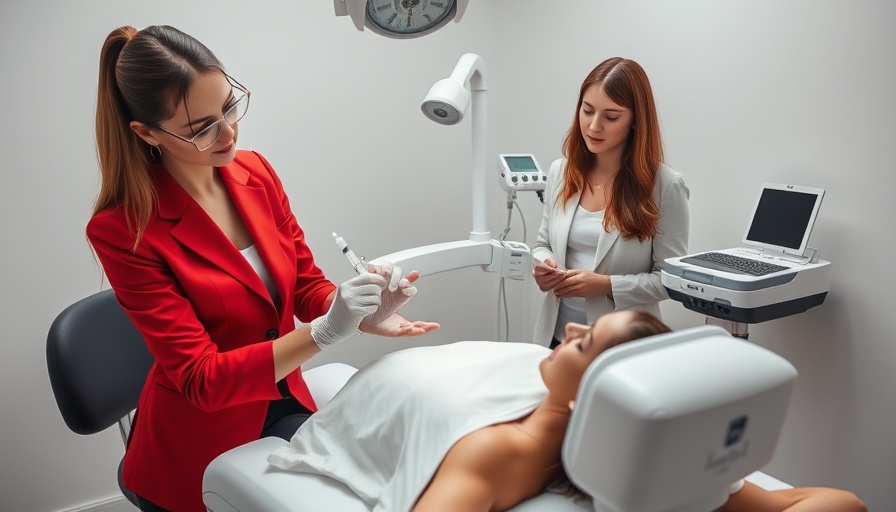
Reclaiming Skincare Conversations in the Digital Age
As social media platforms become the go-to source for skincare advice—often over traditional dermatological expertise—it's critical to investigate the implications of this trend. More than ever, influenced by visually stimulating content, younger audiences are turning to TikTok and Instagram to make decisions about their skincare.
Teen Influence and Social Media's Role in Skincare Choices
Recent studies underscore the powerful role social media plays in shaping skincare routines among teens. The data is alarming: nearly 75% of teenagers use social media for over an hour daily, and just as high a percentage of them report having discovered skincare products through these platforms. In this framework, it’s essential to understand how decision-making around skincare is shifting away from expert recommendations and toward peer-influenced trends.
Skincare Misinformation: Unpacking Dangerous Trends
Unfortunately, not all content found on social platforms is safe or grounded in scientific understanding. Dr. Katherine Armour's article identifies concerning practices that have gained traction in viral videos. Techniques like 'sunscreen contouring' and 'SPF cocktails' are prime examples. These trends pose significant health risks, further compounded by a mere 16.6% of TikTok videos under the #spf and #skincancer tags being created by qualified dermatologists. The remainder is dominated by non-experts whose advice can lead to harmful habits.
The 'Get Ready With Me' Phenomenon and Its Implications
Among the most impactful trends is the 'Get Ready With Me' (GRWM) video genre, which encourages teens to actively mimic skincare routines filled with a plethora of products—many of which are unnecessary or even counterproductive for their skin type. This phenomenon emphasizes the urgent need for dermatologists to speak out and guide young users toward responsible skincare practices.
Actionable Insights for Awareness and Safety
The challenge lies not only in combating misleading information but also in promoting valid skincare education. Dermatologists are tasked with creating engaging, informative, and accessible content that resonates with a younger audience. Here are a few actionable steps for dermatologists wanting to reclaim authority in skincare discussions:
- Educate through Social Media: Create content that demystifies skincare science to attract and engage younger demographics.
- Collaborate with Influencers: Partner with trusted figures within the beauty industry to amplify accurate messages about skincare.
- Interactive Q&A Sessions: Host live Q&A sessions on platforms like Instagram or TikTok to engage with audiences directly and answer their pressing skincare questions.
The Role of Trust in Skincare Advice
Interestingly, though 33.2% of users cite dermatologists as trustworthy sources, a significant portion placed their faith in influencers and peers. This divide illustrates a vital lesson: a credible presence on social media is no longer optional but a necessity for health professionals. By addressing the deeper reasons behind their success—relatability, entertainment value, and accessibility—dermatologists can better position themselves within the skincare narrative.
Looking Forward: Trends to Watch
As social media continues to evolve, dermatologists must also anticipate and adapt to the changing landscape of digital skincare advice. Future trends may lean towards a greater emphasis on mental health and body positivity in skincare discussions, with a growing awareness of the emotional aspects of personal care. Dermatologists have an opportunity to be at the forefront of this shift, converging medical knowledge with contemporary lifestyle trends.
In conclusion, while the involvement of social media in skincare education poses challenges—particularly with misinformation—there is also enormous potential for dermatologists to reclaim their voice in these conversations. Creating engaging, credible content can ultimately help steer these important health discussions back into more trusted hands. It is a call to action for dermatologists to become proactive influencers themselves, educating and protecting the next generation of skincare enthusiasts, thus creating a healthier future.
Act Now: Join the conversation on social media and contribute your expert insights to ensure young audiences are equipped with accurate skincare information. Together, we can make a difference.
 Add Row
Add Row  Add
Add 




Write A Comment